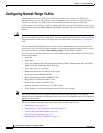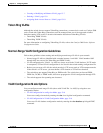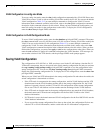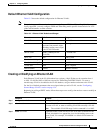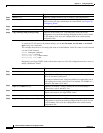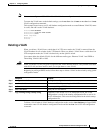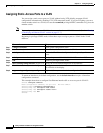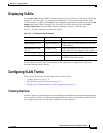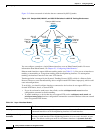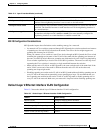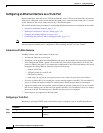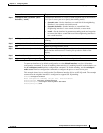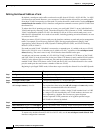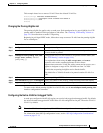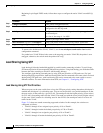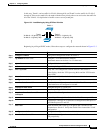
13-12
Catalyst 2940 Switch Software Configuration Guide
78-15507-02
Chapter 13 Configuring VLANs
Configuring VLAN Trunks
Figure 13-2 shows a network of switches that are connected by 802.1Q trunks.
Figure 13-2 Catalyst 2940, 2900 XL, and 3500 XL Switches in a 802.1Q Trunking Environment
You can configure a trunk on a single Ethernet interface or on an EtherChannel bundle. For more
information about EtherChannel, see Chapter 25, “Configuring EtherChannels.”
Ethernet trunk interfaces support different trunking modes (see Table 13-4). You can set an interface as
trunking or nontrunking or to negotiate trunking with the neighboring interface. To autonegotiate
trunking, the interfaces must be in the same VTP domain.
Trunk negotiation is managed by the Dynamic Trunking Protocol (DTP), which is a Point-to-Point
Protocol. However, some internetworking devices might forward DTP frames improperly, which could
cause misconfigurations.
To avoid this, you should configure interfaces connected to devices that do not support DTP to not
forward DTP frames, that is, to turn off DTP.
• If you do not intend to trunk across those links, use the switchport mode access interface
configuration command to disable trunking.
• To enable trunking to a device that does not support DTP, use the switchport mode trunk and
switchport nonegotiate interface configuration commands to cause the interface to become a trunk
but to not generate DTP frames.
Catalyst 6000 series
switch
Catalyst
2900 XL
switch
Catalyst
3500 XL
switch
Catalyst
2940
switch
Catalyst
3500 XL
switch
802.1Q
trunk
802.1Q
trunk
802.1Q
trunk
802.1Q
trunk
87824
VLAN2
VLAN3VLAN1
VLAN1
VLAN2
VLAN3
Table 13-4 Layer 2 Interface Modes
Mode Function
switchport mode access Puts the interface (access port) into permanent nontrunking mode. The interface becomes
a nontrunk interface even if the neighboring interface is a trunk interface.
switchport mode dynamic
desirable
Makes the interface actively attempt to convert the link to a trunk link. The interface
becomes a trunk interface if the neighboring interface is set to trunk, desirable, or auto
mode. The default switch-port mode for all Ethernet interfaces is dynamic desirable.



